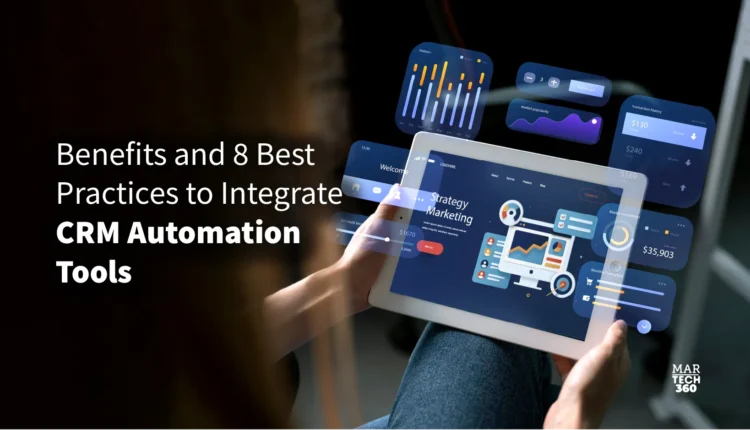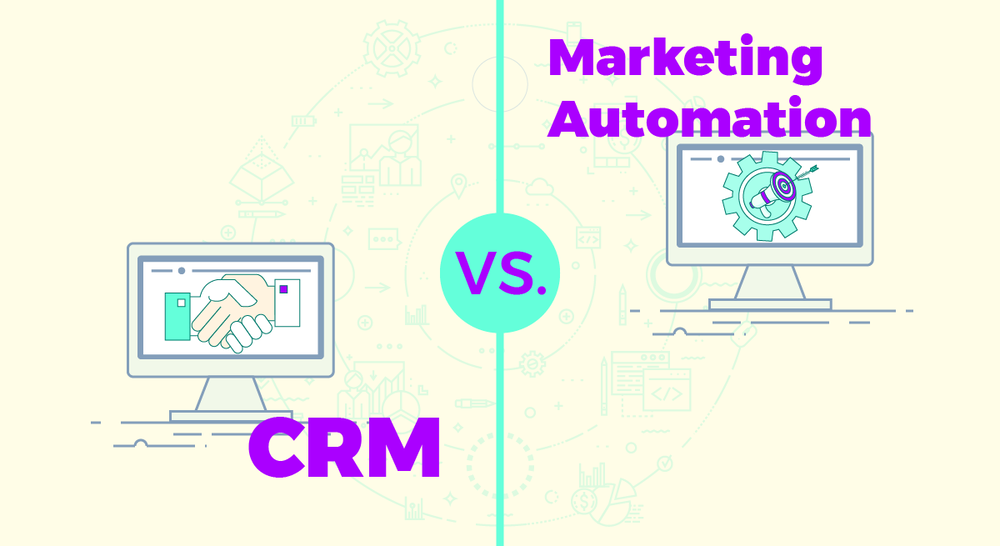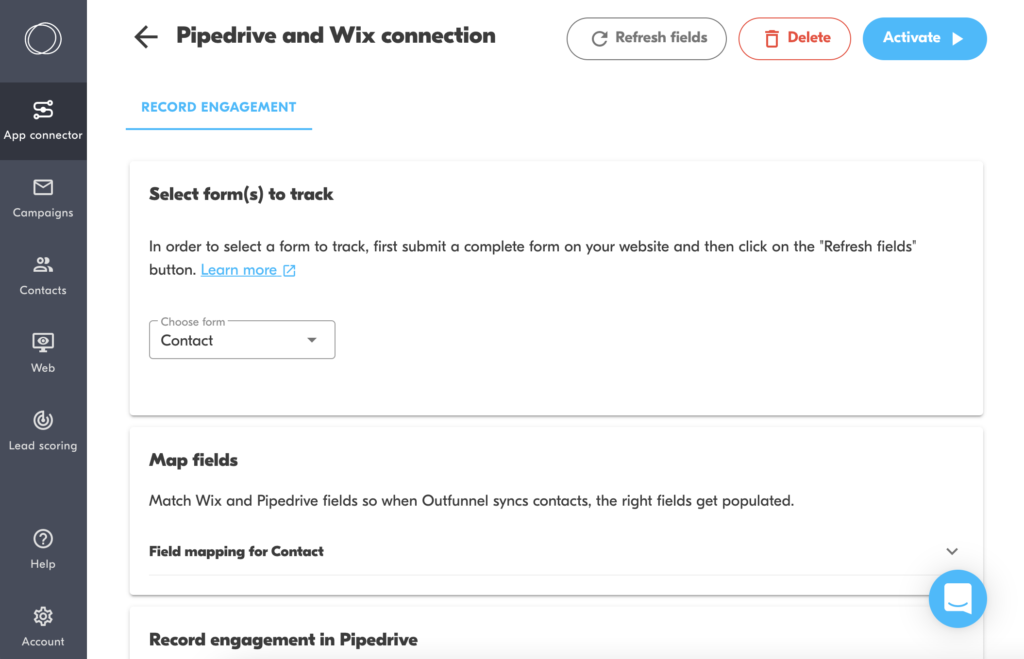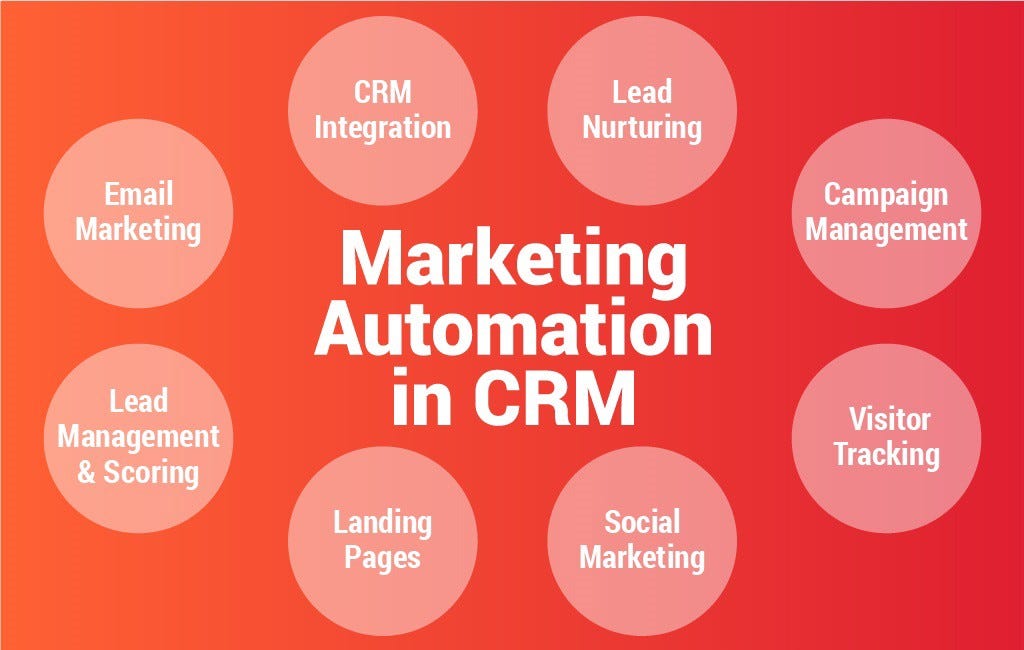Ignite Growth: CRM Marketing Campaign Ideas to Skyrocket Your ROI
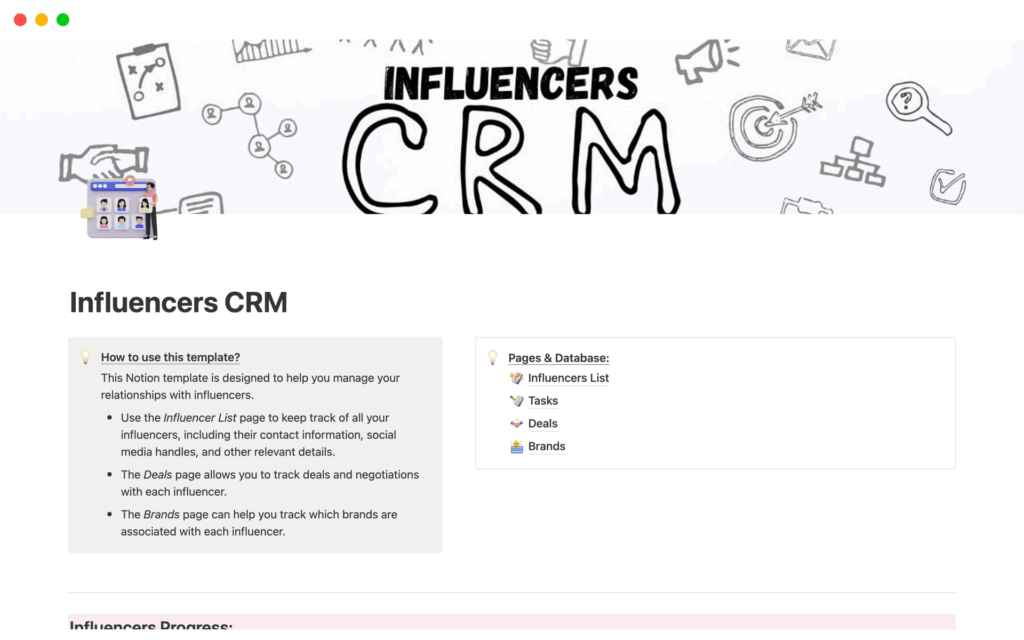
In today’s hyper-competitive market, simply having a Customer Relationship Management (CRM) system isn’t enough. You need to leverage it strategically. The true power of a CRM lies in its ability to fuel targeted, data-driven marketing campaigns. But where do you start? This article dives deep into innovative CRM marketing campaign ideas designed to boost your return on investment (ROI), cultivate customer loyalty, and propel your business to new heights. We’ll explore a range of campaigns, from lead nurturing sequences to personalized product recommendations, equipping you with the knowledge and inspiration to transform your CRM into a marketing powerhouse.
Understanding the Foundation: Why CRM Marketing Matters
Before we jump into specific campaign ideas, let’s solidify the ‘why’ behind CRM marketing. At its core, CRM marketing is about building and nurturing relationships with your customers. It’s about understanding their needs, preferences, and behaviors to deliver relevant and timely messages. This approach offers significant advantages:
- Enhanced Customer Experience: Personalized communication and relevant offers make customers feel valued, leading to increased satisfaction and loyalty.
- Improved Lead Qualification: CRM allows you to track lead interactions, score them based on engagement, and prioritize the most promising prospects.
- Increased Sales Conversion Rates: Targeted campaigns based on customer data are more likely to resonate, resulting in higher conversion rates.
- Reduced Marketing Costs: By focusing on the right audience with the right message, you minimize wasted spend and maximize efficiency.
- Data-Driven Decision Making: CRM provides valuable insights into customer behavior, allowing you to refine your strategies and optimize your campaigns for better results.
Essentially, CRM marketing transforms your approach from a generic, one-size-fits-all strategy to a tailored, customer-centric approach. This shift is crucial in today’s market, where customers expect personalized experiences and value-driven interactions.
Campaign Idea 1: Welcome Series – Making a Great First Impression
The welcome series is a foundational campaign that sets the stage for a positive customer relationship. It’s your opportunity to introduce yourself, highlight the value you offer, and encourage engagement. Here’s how to craft a compelling welcome series:
- Trigger: The trigger for this campaign is typically a new contact being added to your CRM. This could be from a website signup, a lead form submission, or a purchase.
- Email 1: The Warm Welcome: This email should be sent immediately after the trigger. It should express gratitude for the signup, introduce your brand, and reiterate the value proposition. Keep it concise and friendly.
- Email 2: Value Proposition Deep Dive: Sent a day or two later, this email should delve deeper into the benefits of your product or service. Use compelling visuals, testimonials, and clear calls to action.
- Email 3: Social Proof & Engagement: Sent a few days after that, this email can showcase customer success stories, reviews, or case studies. Include links to your social media profiles to encourage engagement and build community.
- Email 4 (Optional): Special Offer: Consider offering a special discount or incentive to encourage a purchase or further engagement. This can be particularly effective for e-commerce businesses.
Example:
Subject: Welcome to [Your Brand]! We’re Thrilled to Have You!
Hi [First Name],
Welcome to the [Your Brand] family! We’re so excited to have you join us.
At [Your Brand], we’re passionate about [Your Brand’s Mission]. We believe in [Your Core Value].
In the coming days, you’ll receive a series of emails designed to help you get the most out of [Your Product/Service].
In the meantime, why not check out our [Resource, Blog Post, or Social Media]?
Thanks again for joining us!
Sincerely,
The [Your Brand] Team
Campaign Idea 2: Lead Nurturing Sequences – Guiding Prospects Through the Sales Funnel
Lead nurturing campaigns are designed to guide potential customers through the sales funnel, educating them about your product or service and building trust along the way. This is a crucial step in converting leads into paying customers. Here’s how to create effective lead nurturing sequences:
- Segment Your Leads: Segment your leads based on their behavior, interests, and lead source. This allows you to tailor your messaging for maximum impact.
- Define Your Goals: What do you want to achieve with this sequence? Increased website traffic? Demo requests? Sales calls? Define your goals upfront.
- Create Valuable Content: Provide valuable content that addresses the pain points of your target audience and positions your product or service as the solution. This could include blog posts, ebooks, webinars, or case studies.
- Automate Your Emails: Use your CRM to automate the delivery of your emails based on triggers and actions. This ensures that leads receive the right content at the right time.
- Track and Optimize: Monitor your campaign performance and make adjustments based on your results. Pay attention to open rates, click-through rates, and conversion rates.
Example:
* Stage 1: Awareness
* Email 1: Offer a valuable piece of content (e.g., an ebook or checklist) in exchange for their email address.
* Stage 2: Interest
* Email 2: Provide more information about your product or service and how it solves their problems.
* Email 3: Share customer testimonials or case studies.
* Stage 3: Decision
* Email 4: Offer a free trial, demo, or consultation.
* Email 5: Address any remaining objections and encourage a purchase.
Campaign Idea 3: Customer Segmentation & Personalization – Delivering Relevant Experiences
Customer segmentation is the process of dividing your customer base into groups based on shared characteristics. This allows you to personalize your marketing messages and offers, making them more relevant and effective. Here’s how to leverage customer segmentation:
- Gather Customer Data: Collect data on your customers’ demographics, purchase history, website behavior, and engagement with your marketing materials.
- Identify Key Segments: Determine the key segments within your customer base based on their shared characteristics (e.g., age, location, purchase history, product interests).
- Create Personalized Messaging: Tailor your marketing messages and offers to each segment, addressing their specific needs and interests.
- Use Dynamic Content: Use dynamic content in your emails and on your website to personalize the customer experience based on their segmentation data.
- Monitor and Refine: Track the performance of your segmented campaigns and make adjustments based on your results.
Segmentation Examples:
- By Purchase History: Customers who have purchased a specific product can receive follow-up emails with related products or accessories.
- By Website Behavior: Customers who have viewed a specific product page can receive retargeting ads or emails with special offers.
- By Engagement: Customers who have opened and clicked on your emails can receive more frequent or advanced content.
- By Demographics: Customers can be targeted with messaging that aligns with their age, location, or other demographic information.
Campaign Idea 4: Abandoned Cart Recovery – Reclaiming Lost Sales
Abandoned cart emails are a highly effective way to recover lost sales. When a customer adds items to their cart but doesn’t complete the purchase, an abandoned cart email can remind them of their items and encourage them to return to your website. Here’s how to create a successful abandoned cart campaign:
- Timing is Key: Send your first email within an hour of the cart abandonment.
- Remind Them of Their Items: Clearly display the items that were left in the cart.
- Highlight the Benefits: Remind the customer of the benefits of purchasing the items (e.g., free shipping, easy returns).
- Include a Clear Call to Action: Make it easy for the customer to return to their cart and complete their purchase.
- Offer an Incentive (Optional): Consider offering a discount or free shipping to incentivize the purchase.
Example:
Subject: Still Thinking About These?
Hi [First Name],
We noticed you left some amazing items in your cart!
[Image of the abandoned items]
These items are waiting for you. Complete your purchase now:
[Link to the abandoned cart]
Enjoy free shipping on orders over $[Amount]!
Thanks,
The [Your Brand] Team
Campaign Idea 5: Product Recommendations – Cross-Selling and Upselling
Product recommendation campaigns are designed to suggest relevant products to customers based on their purchase history, browsing behavior, or other data. This is a powerful way to cross-sell (suggesting related products) and upsell (suggesting higher-priced or premium products). Here’s how to implement product recommendations:
- Personalize Recommendations: Use customer data to personalize the product recommendations.
- Showcase Best-Selling Products: Highlight your best-selling products to encourage purchases.
- Recommend Related Products: Suggest products that complement the customer’s previous purchases.
- Use “Customers Also Bought” Recommendations: Display products that other customers have purchased along with the same items.
- Test and Optimize: Experiment with different recommendation strategies and track your results to optimize your campaigns.
Example:
* After Purchase Email: “Thank you for your order! You might also like…” (Display related products)
* Website Recommendations: Display personalized product recommendations on your website based on the customer’s browsing history.
* Email Newsletter: Feature a section with product recommendations based on customer segments.
Campaign Idea 6: Win-Back Campaigns – Re-Engaging Dormant Customers
Win-back campaigns are designed to re-engage customers who haven’t interacted with your brand in a while. This is a great way to reactivate dormant customers and prevent them from churning. Here’s how to create effective win-back campaigns:
- Identify Dormant Customers: Define what constitutes a dormant customer (e.g., no purchases in X months, no email opens in Y months).
- Segment Your Audience: Segment your dormant customers based on their previous behavior or purchase history.
- Craft a Compelling Offer: Offer an incentive to re-engage the customer, such as a discount, free shipping, or exclusive content.
- Use a Friendly Tone: Make the email personal and friendly, reminding the customer of their previous interactions with your brand.
- Make it Easy to Re-Engage: Include a clear call to action and make it easy for the customer to return to your website.
Example:
Subject: We Miss You, [First Name]!
Hi [First Name],
It’s been a while since we’ve seen you! We miss you!
As a thank you for being a valued customer, we’d like to offer you [Discount or Offer].
[Link to your website]
We hope to see you back soon!
Sincerely,
The [Your Brand] Team
Campaign Idea 7: Surveys and Feedback – Gathering Customer Insights
CRM marketing isn’t just about sending messages; it’s also about listening to your customers. Surveys and feedback campaigns are a valuable way to gather customer insights, understand their needs, and improve your products or services. Here’s how to implement surveys and feedback campaigns:
- Choose the Right Survey Tool: Select a survey tool that integrates with your CRM and allows you to segment your audience.
- Keep it Short and Simple: Ask concise, relevant questions. Avoid overwhelming the customer with too many questions.
- Offer an Incentive (Optional): Consider offering an incentive for completing the survey, such as a discount or entry into a drawing.
- Analyze the Results: Analyze the survey results to identify trends and insights.
- Take Action: Use the feedback to improve your products, services, and customer experience.
Example:
* Post-Purchase Survey: Ask customers about their experience with their recent purchase.
* Customer Satisfaction Survey (CSAT): Measure customer satisfaction with your products or services.
* Net Promoter Score (NPS) Survey: Measure customer loyalty and willingness to recommend your brand.
* Product Feedback Survey: Gather feedback on specific products or features.
Campaign Idea 8: Event-Based Marketing – Timing Your Messages Perfectly
Event-based marketing leverages specific events or milestones in the customer journey to trigger marketing messages. This approach ensures that your messages are timely and relevant, leading to higher engagement. Here’s how to implement event-based marketing:
- Identify Key Events: Determine the key events in your customer’s journey (e.g., birthdays, anniversaries, product usage milestones, subscription renewals).
- Automate Your Campaigns: Use your CRM to automate the delivery of your messages based on these events.
- Personalize Your Messages: Tailor your messages to the specific event and the customer’s relationship with your brand.
- Offer Relevant Content: Provide valuable content that aligns with the event.
- Track and Optimize: Monitor your campaign performance and make adjustments based on your results.
Examples:
- Birthday Emails: Send a personalized email with a special offer on the customer’s birthday.
- Anniversary Emails: Celebrate the anniversary of the customer’s first purchase or signup.
- Product Usage Reminders: Send helpful tips and reminders based on the customer’s product usage.
- Subscription Renewal Notifications: Send reminders about upcoming subscription renewals.
Campaign Idea 9: Loyalty Programs – Rewarding Customer Loyalty
Loyalty programs are a powerful way to reward customer loyalty and encourage repeat purchases. They incentivize customers to stay engaged with your brand and build a strong, lasting relationship. Here’s how to implement a successful loyalty program:
- Choose the Right Program Structure: Consider a points-based system, a tiered program, or a combination of both.
- Define Your Rewards: Offer attractive rewards that incentivize customer loyalty (e.g., discounts, free products, exclusive access).
- Make it Easy to Join: Make it easy for customers to enroll in your loyalty program.
- Promote Your Program: Promote your loyalty program across all your marketing channels.
- Communicate Regularly: Keep customers informed about their points, rewards, and program updates.
Example:
* Points-Based System: Customers earn points for every purchase, which they can redeem for discounts or free products.
* Tiered Program: Customers move up tiers based on their spending or engagement, unlocking more exclusive rewards.
* Referral Program: Reward customers for referring new customers to your brand.
Campaign Idea 10: Cross-Channel Marketing – Delivering Seamless Experiences
Cross-channel marketing involves delivering consistent and personalized messages across multiple marketing channels (e.g., email, SMS, social media, website). This approach ensures a seamless customer experience and allows you to reach your customers where they are most active. Here’s how to implement cross-channel marketing:
- Integrate Your Channels: Integrate your CRM with your other marketing channels.
- Track Customer Behavior: Track customer behavior across all channels to gain a holistic view of their interactions.
- Personalize Your Messaging: Tailor your messages to each channel and the customer’s preferences.
- Automate Your Campaigns: Use your CRM to automate your cross-channel campaigns.
- Test and Optimize: Experiment with different channel combinations and track your results to optimize your campaigns.
Examples:
- Email + SMS: Send an email to announce a new product launch and follow up with an SMS reminder.
- Website + Social Media: Use website retargeting ads to promote products to customers who have viewed your website.
- Email + In-App Messaging: Send an email to announce a new feature and provide in-app guidance.
Measuring Success: Key Metrics for CRM Marketing Campaigns
To truly gauge the effectiveness of your CRM marketing campaigns, you need to track the right metrics. Here are some key metrics to monitor:
- Open Rate: The percentage of emails that are opened.
- Click-Through Rate (CTR): The percentage of recipients who click on links in your emails.
- Conversion Rate: The percentage of recipients who complete a desired action (e.g., purchase, sign-up).
- Customer Lifetime Value (CLTV): The predicted revenue a customer will generate over their lifetime.
- Customer Acquisition Cost (CAC): The cost of acquiring a new customer.
- Return on Investment (ROI): The profitability of your marketing campaigns.
- Website Traffic: The amount of traffic generated by your marketing campaigns.
- Lead Generation: The number of leads generated by your campaigns.
- Customer Satisfaction (CSAT) and Net Promoter Score (NPS): Measures of customer satisfaction and loyalty.
By tracking these metrics, you can identify what’s working and what’s not, allowing you to optimize your campaigns and improve your results.
Best Practices for Maximizing CRM Campaign Effectiveness
Beyond the specific campaign ideas, here are some overarching best practices to keep in mind:
- Data Quality is Paramount: Ensure the accuracy and completeness of your customer data. Regularly clean and update your CRM database.
- Personalization is Key: Tailor your messages and offers to each customer’s individual needs and preferences.
- Test, Test, Test: A/B test your campaigns to optimize your subject lines, email content, calls to action, and other elements.
- Stay Consistent: Maintain a consistent brand voice and messaging across all your marketing channels.
- Respect Customer Preferences: Allow customers to opt-out of your marketing communications and respect their choices.
- Automate Where Possible: Leverage automation to streamline your marketing processes and save time.
- Integrate Your CRM: Integrate your CRM with your other marketing tools and platforms.
- Stay Up-to-Date: Keep abreast of the latest trends and best practices in CRM marketing.
- Focus on Customer Experience: Prioritize the customer experience in all your marketing efforts.
- Analyze and Refine: Continuously analyze your campaign performance and make adjustments to improve your results.
Conclusion: Unleash the Power of CRM Marketing
CRM marketing is no longer an option; it’s a necessity for businesses that want to thrive in today’s competitive landscape. By implementing these CRM marketing campaign ideas and following best practices, you can transform your CRM into a powerful engine for growth, driving customer loyalty, and boosting your ROI. Embrace the power of data, personalization, and automation, and watch your business flourish. Remember, the journey to CRM marketing success is an ongoing process of learning, testing, and refinement. So, start implementing these ideas today and begin your journey to a more customer-centric and successful future!

